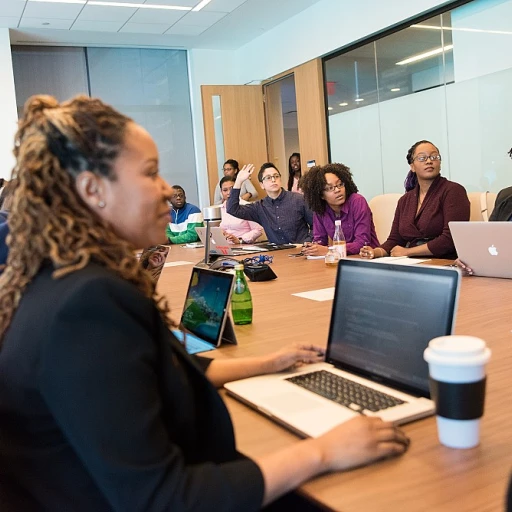
Understanding human centered leadership in HR
Defining a Human Centered Leadership Approach
In today’s evolving workplace, the role of the chief human resources officer (CHRO) is increasingly shaped by a human centered leadership approach. This philosophy places people at the heart of every decision, recognizing that employees are not just resources but the driving force behind organizational success. Human centered leaders set the tone for workplace culture, ensuring that employees feel valued, heard, and supported. This approach goes beyond traditional management by prioritizing open communication, emotional intelligence, and trust-building across all levels of the business.
The Shift Toward People-First Leadership
Modern organizations are moving away from rigid hierarchies and transactional leadership models. Instead, they are embracing leadership that is rooted in empathy and awareness emotional intelligence. For CHROs, this means developing leadership skills that foster employee engagement and create a positive work life balance. By focusing on the human aspect of leadership, directors and leaders can help teams thrive, adapt to change, and achieve long term business goals. The emphasis on people also supports professional development and continuous learning, which are essential for both individual and organizational growth.
Why Emotional Intelligence Matters
Emotional intelligence is a cornerstone of human centered leadership. Leaders with high emotional intelligence are better equipped to understand the needs and motivations of their employees. This awareness helps leaders build trust, resolve conflicts, and create an environment where employees feel safe to express ideas and concerns. Emotional intelligence also enhances the ability to lead diverse teams and navigate complex workplace dynamics, making it a critical skill for those aspiring to CHRO positions.
Learning and Development for Human Centered Leaders
To cultivate a human centered leadership style, many professionals pursue leadership development courses and online programs. These learning experiences are designed to help leaders build the skills needed to support teams, drive employee engagement, and balance business objectives with the well-being of employees. Investing in ongoing learning ensures that leaders remain adaptable and responsive to the changing needs of the workforce. For a deeper exploration of how embracing uniqueness can elevate human resources leadership, consider reading this insightful article on embracing uniqueness in HR leadership.
Key skills for a human centered chief human resources officer
Essential Qualities for Human Centered HR Leadership
To thrive as a chief human resources officer in today’s business world, leaders need more than technical expertise. The shift toward human centered leadership means that emotional intelligence and a people-first mindset are now at the core of effective HR leadership. These qualities help leaders set the tone for a workplace culture where employees feel valued and engaged.
- Emotional intelligence: Understanding and managing one’s own emotions, as well as recognizing and responding to the emotions of others, is fundamental. This skill helps leaders build trust and foster open communication across teams.
- Active listening: Human centered leaders prioritize listening to employees, making sure their voices are heard. This approach supports employee engagement and helps address concerns before they escalate.
- Adaptability: The ability to navigate change and uncertainty is crucial. Leaders who are flexible and open to new ways of working can better support their teams and the business during transitions.
- Strategic thinking: Balancing business goals with employee needs requires a strategic mindset. Human centered HR directors must align people strategies with long term organizational objectives.
- Commitment to learning: Ongoing professional development and leadership development are essential. Many leaders pursue online courses or participate in leadership programs to enhance their skills and stay current with best practices.
Developing Skills for a People-First Approach
Building these leadership skills is an ongoing journey. Many organizations encourage HR leaders to participate in leadership development programs, attend workshops, and seek out online learning experiences. These opportunities help leaders deepen their awareness emotional intelligence and refine their leadership approach.
For those seeking to enhance their remote work skills, resources like this guide for chief human resources officers can provide practical strategies for leading distributed teams while maintaining a human centered focus.
Ultimately, the most effective chief human resources officers are those who combine business acumen with a genuine commitment to people. By investing in their own learning and modeling centered leadership, they help create environments where employees feel supported and motivated to do their best work.
Navigating organizational change with a people-first approach
Leading Change with Empathy and Clarity
Organizational change is a constant in the business world, and the way leaders manage it can define the success of both the company and its people. Human centered leadership in HR means putting employees at the heart of every transition. This approach requires a blend of emotional intelligence, open communication, and a deep understanding of what employees need to feel valued and supported during periods of uncertainty.
- Emotional intelligence helps leaders recognize and respond to the concerns and anxieties that change can trigger in teams.
- Open communication ensures that employees are informed, heard, and able to provide feedback, which builds trust and engagement.
- Awareness of workplace culture allows HR directors to tailor their approach, making sure the unique needs of each team are addressed.
Human centered leaders set the tone for how change is experienced. They model transparency, encourage dialogue, and create learning experiences that help employees adapt. Leadership development programs and online courses can equip HR professionals with the skills to lead with empathy and clarity, ensuring that transitions are not just managed, but embraced as opportunities for growth.
Balancing business goals with employee needs is a core part of this leadership approach. By focusing on both, HR leaders foster long term employee engagement and a resilient workplace culture. For more insights on how to harness tools for achieving competitive excellence in HR leadership, explore this resource.
Balancing business goals with employee needs
Finding the Right Balance for Sustainable Success
For chief human resources officers, balancing business goals with employee needs is a daily challenge. The best leaders understand that a human centered approach is not about choosing one over the other. Instead, it’s about integrating both to create a workplace culture where people and business thrive together.
Centered leaders use emotional intelligence to recognize the pressures employees face while also keeping sight of organizational objectives. This awareness helps leaders set the tone for open communication, making it easier to align team efforts with long term business strategies. When employees feel valued and heard, their engagement rises, which in turn supports business growth.
- Open communication: Encourages feedback and transparency, helping leaders understand what employees need to succeed.
- Leadership skills: Courses and online learning programs can help leaders develop the emotional intelligence needed to manage both people and business priorities.
- Professional development: Investing in leadership development and learning experience opportunities shows employees that their growth matters, increasing trust and loyalty.
Human centered leadership is about more than just policies. It’s about creating an environment where employees feel supported in their work life, even as the organization pursues ambitious goals. By focusing on both sides, directors and leaders can help teams achieve results while maintaining high levels of employee engagement and trust.
| Business Goals | Employee Needs | Human Centered Leadership Actions |
|---|---|---|
| Drive performance | Work-life balance | Flexible work policies, regular check-ins |
| Increase productivity | Recognition and growth | Employee engagement programs, learning opportunities |
| Meet targets | Trust and support | Transparent communication, leadership development |
Ultimately, the most effective CHROs are those who see the connection between people and performance. They help leaders across positions develop the skills to support both, ensuring that the organization’s success is built on a foundation of trust and human centered leadership.
Building trust and engagement across teams
Creating a Culture of Trust and Engagement
Building trust and engagement across teams is a core responsibility for any chief human resources officer. Human centered leadership sets the tone for a workplace culture where employees feel valued and respected. When leaders focus on people, they foster open communication and encourage employees to share their ideas and concerns without fear. This approach not only helps leaders understand the needs of their teams but also strengthens the emotional connection between employees and the organization. A director or executive in HR who demonstrates emotional intelligence can recognize and respond to the emotions of others, which is essential for building trust. Emotional awareness allows leaders to address conflicts with empathy and create solutions that consider both business objectives and individual well-being. This balance is crucial for long term employee engagement and retention.- Promoting open communication channels so employees feel heard
- Encouraging leadership development and professional development opportunities for all team members
- Implementing learning programs and online courses to support continuous learning
- Recognizing achievements and contributions to help employees feel valued
Measuring the impact of human centered leadership in HR
Tracking Progress with Human-Centered Metrics
Measuring the impact of human centered leadership in HR goes beyond traditional business KPIs. It requires a focus on how leadership shapes the workplace culture, employee engagement, and long term organizational health. Human centered leaders set the tone for open communication and trust, which can be seen in both qualitative and quantitative data.- Employee Engagement Scores: Regular surveys help leaders gauge how employees feel about their work life, team dynamics, and the support they receive from HR. High engagement often signals that employees feel valued and heard.
- Retention and Turnover Rates: A people-first leadership approach often leads to lower turnover, as employees are more likely to stay in positions where they experience trust and professional development opportunities.
- Feedback from Learning and Development Programs: Tracking participation and feedback in leadership development courses, online learning, and emotional intelligence workshops provides insight into the effectiveness of HR’s efforts to help leaders grow.
- Quality of Workplace Relationships: Open communication and emotional intelligence foster stronger connections across teams. Regular pulse checks and 360-degree feedback can reveal how well centered leaders are building trust and collaboration.
Linking Leadership Approach to Business Outcomes
A human centered leadership approach in HR is closely tied to business results. When employees feel supported and included, they are more productive and innovative. Leaders who prioritize awareness emotional skills and create a supportive environment can directly influence:- Increased productivity and creativity within teams
- Higher rates of internal mobility and skills development
- Improved customer satisfaction, as engaged employees deliver better service












